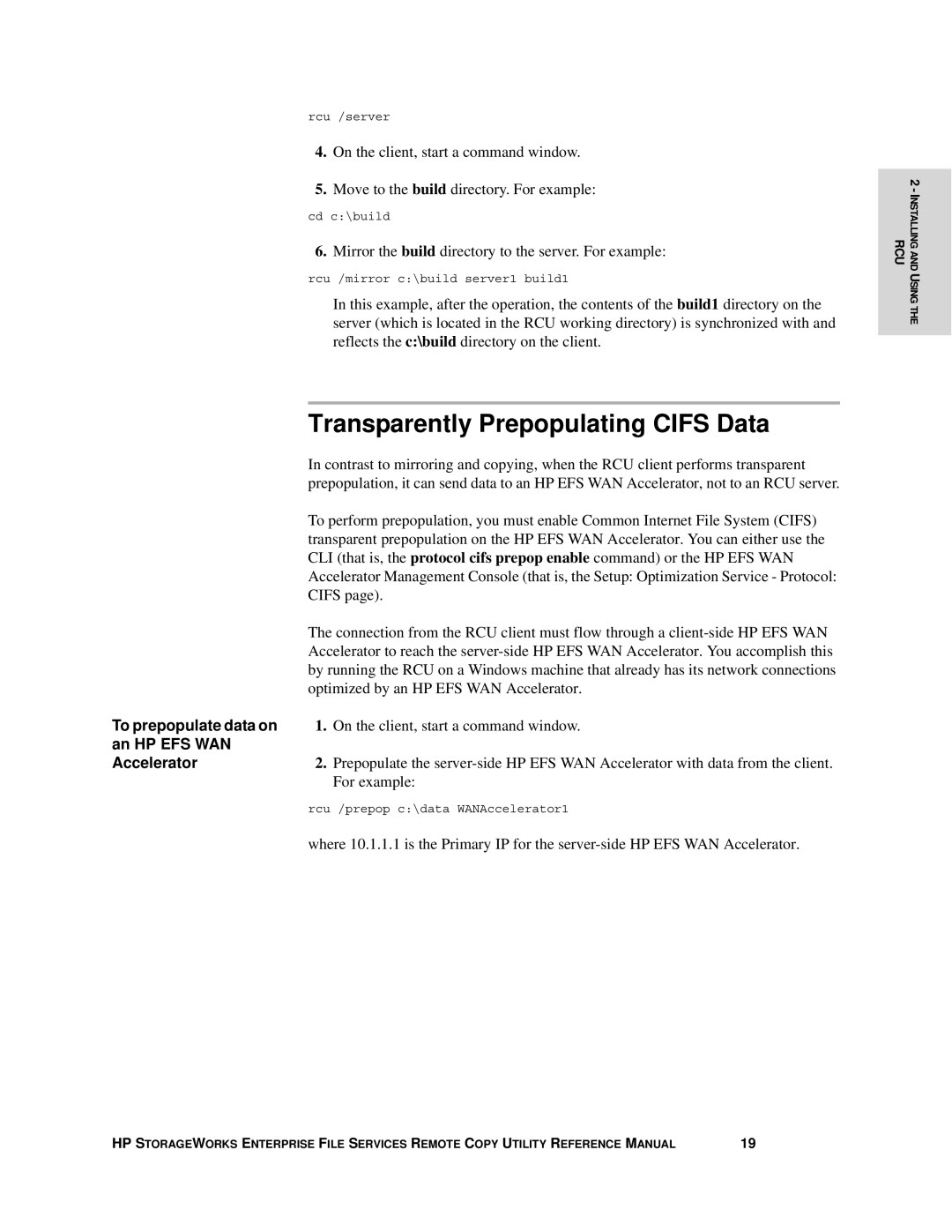
rcu /server
4.On the client, start a command window.
5.Move to the build directory. For example:
cd c:\build
6.Mirror the build directory to the server. For example:
rcu /mirror c:\build server1 build1
In this example, after the operation, the contents of the build1 directory on the server (which is located in the RCU working directory) is synchronized with and reflects the c:\build directory on the client.
Transparently Prepopulating CIFS Data
In contrast to mirroring and copying, when the RCU client performs transparent prepopulation, it can send data to an HP EFS WAN Accelerator, not to an RCU server.
To perform prepopulation, you must enable Common Internet File System (CIFS) transparent prepopulation on the HP EFS WAN Accelerator. You can either use the CLI (that is, the protocol cifs prepop enable command) or the HP EFS WAN Accelerator Management Console (that is, the Setup: Optimization Service - Protocol: CIFS page).
The connection from the RCU client must flow through a
To prepopulate data on 1. On the client, start a command window. an HP EFS WAN
Accelerator2. Prepopulate the
rcu /prepop c:\data WANAccelerator1
where 10.1.1.1 is the Primary IP for the
2 - INSTALLING AND USING THE RCU
HP STORAGEWORKS ENTERPRISE FILE SERVICES REMOTE COPY UTILITY REFERENCE MANUAL | 19 |
